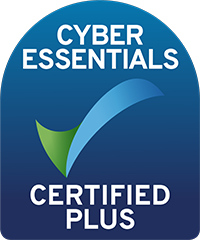June Questions and Answers
Newsletter issue - June 2016.
Q I am thinking of purchasing a new house that I will use as my main residence, but I will still own other properties. Will I be liable to the new 3% stamp duty land tax (SDLT) change?A: HMRC guidance on the new higher rates of SDLT for purchase of additional residential properties explains that if a previous main residence is replaced within three years, then you will not be liable to the additional 3% SDLT charge, even though you own other residential properties.
Q I commenced trading as a service provider on 1 September 2015 and now wish to complete my 2015/16 tax return. I have not incurred any capital expenditure and my turnover is less than the current VAT threshold. Should I use 30 March (or 5 April) as my accounting year-end?
A: If you make your business accounts up to 31 March, HMRC will treat this as being made up to 5 April. One advantage of a 31 March/ 5 April year-end is that no 'overlap' profits will be created. Broadly, overlap profits are brought about by being taxed twice in the first two years of trading. You would get relief for this overlap, but potentially this won't be until a much later stage (for example if you change your accounting date, or if you cease to trade). Quite often, profits in a new business are smaller at the start and gradually increase. An advantage of a 30 April year-end is that tax is paid later. So, for a 30 April 2016 year-end, tax will become due for payment on 31 January 2018, and the tax on profits earned between 1 May 2016 and 30 April 2017 will be payable by 31 January 2019. If the business had a 31 March 2017 year-end, the tax on profits earned between 1 April 2016 and 31 March 2017 would not become payable until 31 January 2018. Of course, if you chose a later year-end, you should make sure that you keep enough money aside to pay your tax bill when it becomes due.
Q How do I register as a self-employed subcontractor in the construction industry?
A: You need to register with HMRC for both self-assessment as self-employed, and under the construction industry scheme (CIS). This does mean that there are two separate registrations, but these can both can be done at the same time.
In most cases you can register as self-employed by calling the HMRC Newly Self-employed Helpline on 0300 200 3504. If you are already registered as self-employed, but need to register under the CIS scheme, you should contact the CIS Helpline on 0300 200 3210.
The contractor for whom you are working will ask you for your unique tax reference (UTR) and you need to provide this before you are first paid, in order to determine which tax deduction rate to use.
The UTR is issued when you are first set up under self-assessment to complete a tax return. If you have not previously been required to prepare a tax return, you will be given a UTR when you register as self-employed.
For further guidance on registration and other obligations for subcontractors, see the Gov.uk website at https://www.gov.uk/what-you-must-do-as-a-cis-subcontractor.
Charities & Not For Profit
We have been providing charity clients with high quality, specialist advice and service for many years, and our charity clients range from small village halls to large national organisations...

Farming Industry
The largest industry sector that we deal with is farming, as you would expect in a rural practice. This means that we have developed considerable expertise in this field...

 Cookies are small text files that are stored on your computer when you visit a website. They are mainly used as a way of improving the website functionalities or to provide more advanced statistical data.
Cookies are small text files that are stored on your computer when you visit a website. They are mainly used as a way of improving the website functionalities or to provide more advanced statistical data.












